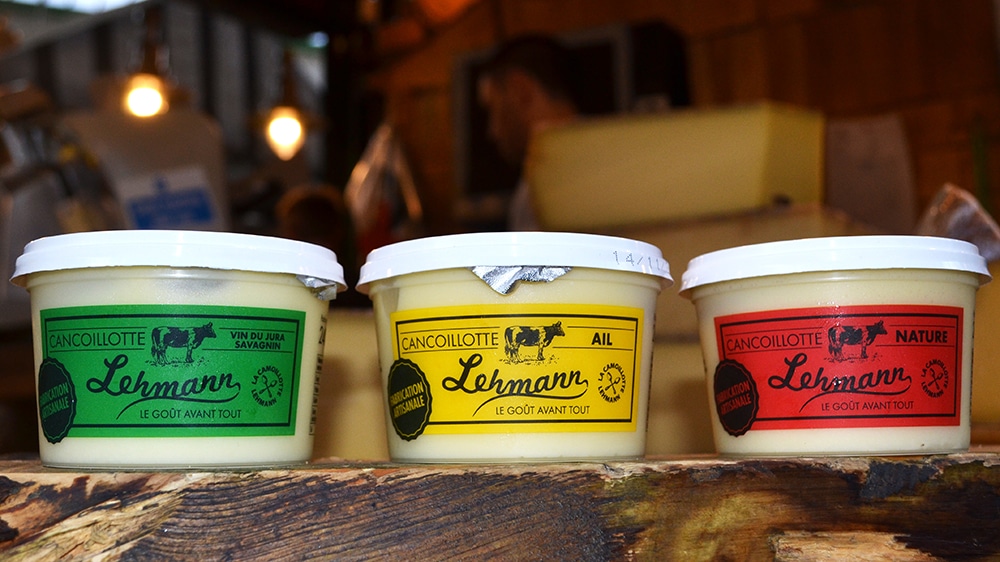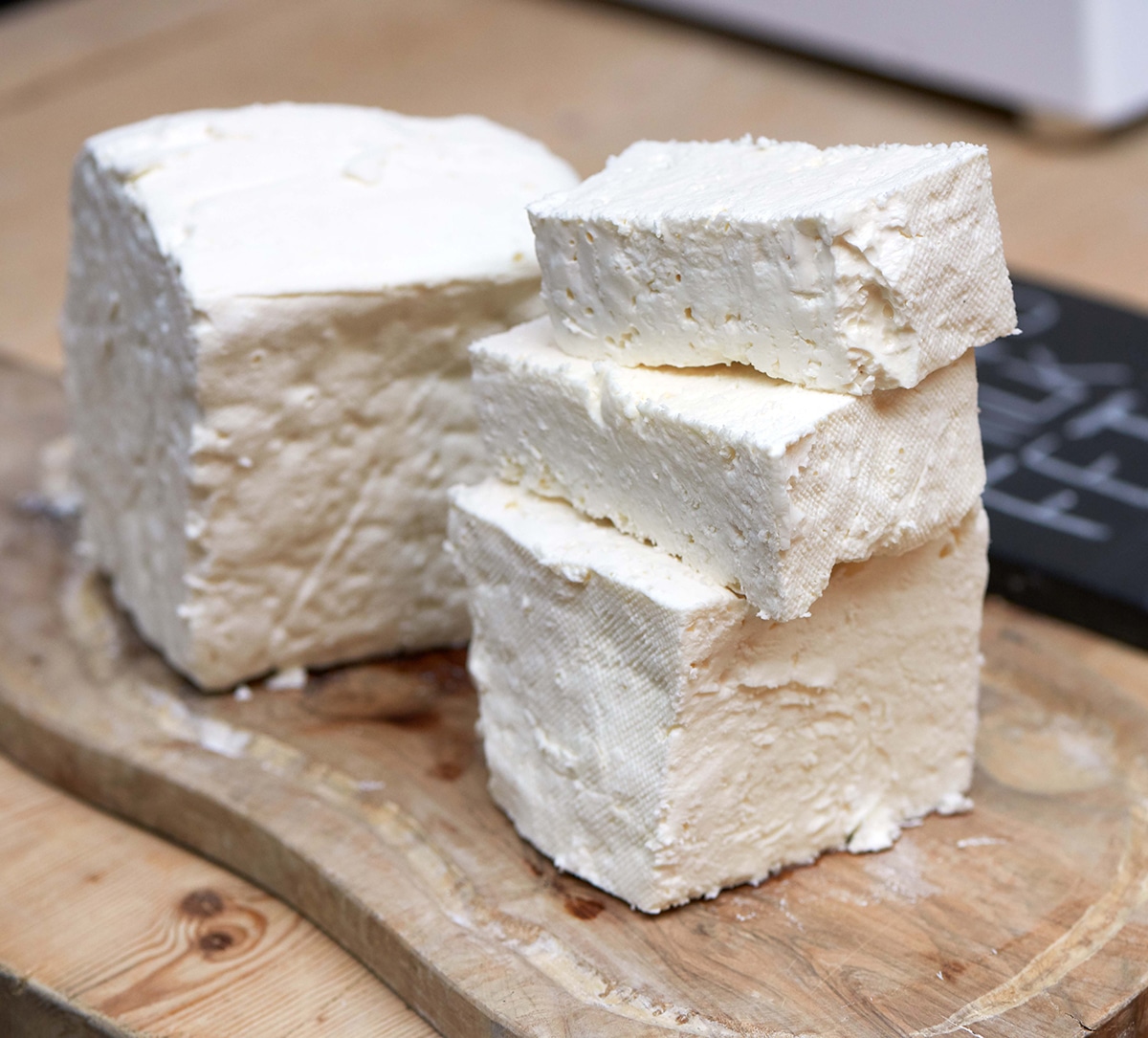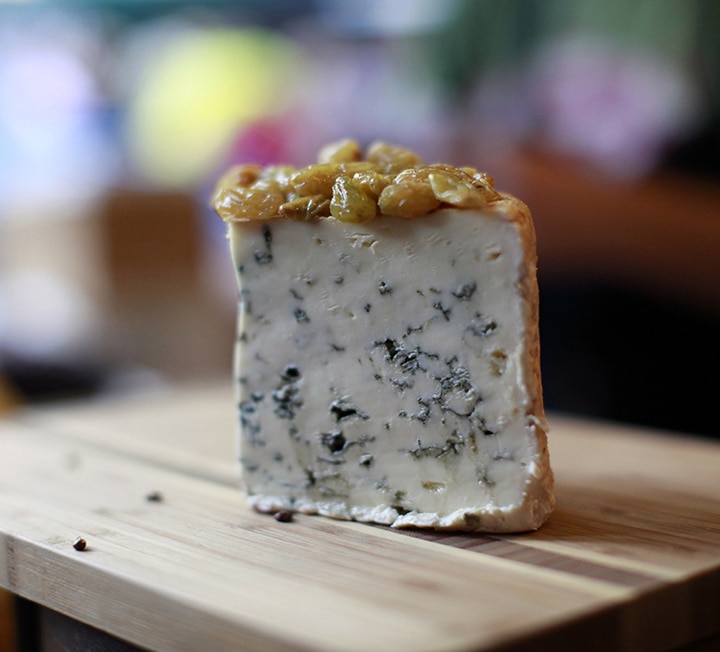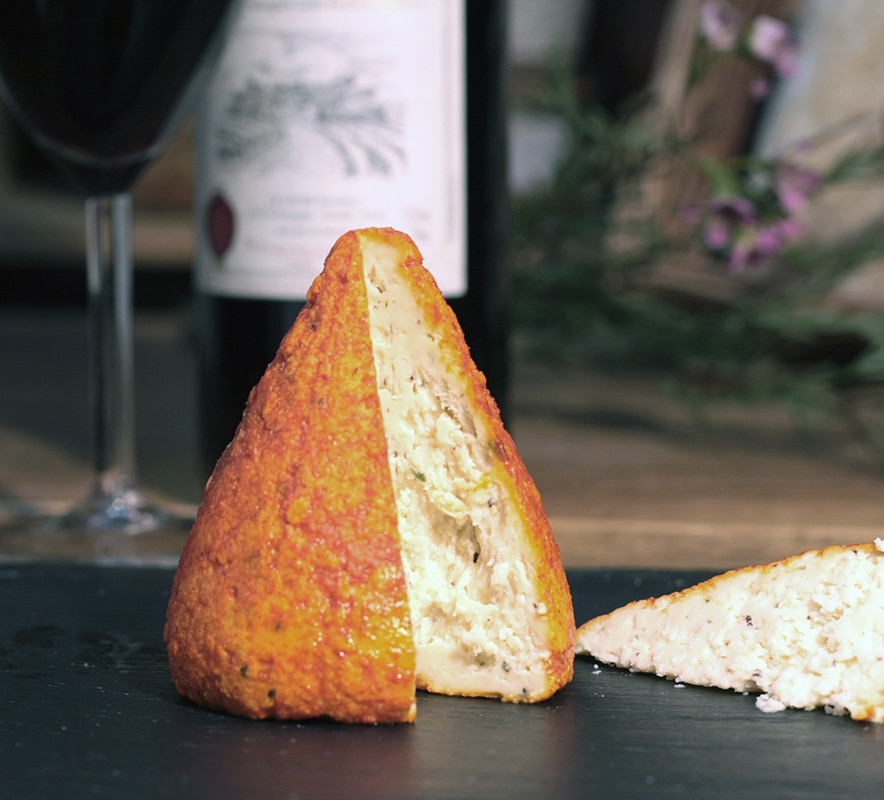Blessed are the cheesemakers: cancoillotte
Clare Finney tells the story behind a highly traditional regional cheese from The French Comte


“CANCOILLOTTE WAS DEVISED BY PEASANTS ANXIOUS THAT NOTHING GO TO WASTE DURING BUTTER MAKING”
“This is the cheese I suggest when people say ‘I can’t have cheese, I am on a diet!’” Florent at The French Comte grins, opening the lid of the cancoillotte. Pale, glossy, with the texture of extra rich and creamy yoghurt when cold and melting butter when hot, it does not look like a cheese which, Florent proudly boasts, is “one of the very few cheeses that’s less than 10 per cent fat”.
Nor does it taste like it. Sure, it’s no stilton, but it’s “flavourful rather than strong” and accommodates other flavours beautifully. Its closest comparison is mascarpone, the soft Italian cheese, but really, says Florent, “there’s nothing else like cancoillotte. It’s so original and local to our region that even Parisian friends haven’t heard of it” – Florent’s region being, of course, Franche-Comté in eastern France.
It’s been around since the 16th century, though the name descends from the 19th century word coille, which refers to the milk left after extracting cream. Devised by peasants anxious that nothing go to waste during butter making, cancoillotte came about through their practice of adding milk to the coille, before coagulating, cutting, pressing and ripening it to create a cheese known as metton.
Melt metton in a little water or milk over a low heat, Florent continues, add salt and butter, and voila! It’s cancoillotte, a cheese which, in its humble origins and its significance to the local community, is as rooted in the terroir and traditions of the Franche-Comte as the celebrated comté itself.
Perhaps – whisper it – even more so: for where comte is made solely from milk, producers of cancoillotte are wont to incorporate an intriguing array of local produce into the creamy cheese. “There’s the typical French cancoillotte with garlic, one with Jura wine – we sell both here, as well as the classic – and as it’s become more popular, people have developed cheese with shallots, truffles, or girolles.”
Florent’s producer, a family friend with whom he has worked for many years, even makes some with the local spirit, absinthe. “You don’t get hammered when you eat it,” he grins, “it’s actually very nice.”
For his own part, however, he’s partial to the classic, with its soft, creamy texture and buttery taste. “It is what you make it. Each cancoillotte is different” – for it is one of the few cheeses in the region still made domestically. Proud as he is of his highly esteemed producer, Florent’s fondest memories of this cheese are of eating it at home. “We would buy the metton and mum would make a big bowl of it for the family. It can be served in so many ways,” he enthuses: “hot in fondu, cold spread on bread, stirred through pasta, melted on vegetables. My favourite is cancoillotte melted over the local montbeliard or morteau sausage” – served, of course, with a glass of cote du Jura or vin Jaune.


